How does a city go from near death to being named the world’s most innovative city? In 1990, Medellin was the most violent city in the world – with up to 40 homicides per day. The only way to get from the airport to the city was by helicopter – avoiding the likelihood of kidnapping on the highway. But 26 years later, it was awarded the biennial World City Prize for innovation in urban development by improving employability, safety and the economy. 
Curious about such a remarkable turnaround (and it still has a long way to go) there is much to admire in the resiliency, civic responsibility, activist local government, and massive infusion of public funds with the approval of local neighborhoods. The city lies in a valley at about 5,000′ surrounded by a section of the Andes that range up to 8,500′ Essentially, it’s the bottom of a bowl with urban sprawl crawling up mountainsides in every direction. The higher you go, the fewer the services (police, fire, hospitals, schools), the less access to public transportation, jobs and utilities until neighborhoods became shantytowns, riddled with drugs and crime, and ruled by local gangs.
 View of Medellin from the Metrocable cars that connect the highest, poorest “off the grid” barrios with the city center. A 3.500 foot drop.
View of Medellin from the Metrocable cars that connect the highest, poorest “off the grid” barrios with the city center. A 3.500 foot drop.
 The barrios have turned around with access to public services – especially transportation in form of urban outdoor escalators and a metro-cable system that glides 3,000′ feet down into the city center – connecting the poorest city outskirts to jobs in the city accessed by the modern metro, pride of the city.
The barrios have turned around with access to public services – especially transportation in form of urban outdoor escalators and a metro-cable system that glides 3,000′ feet down into the city center – connecting the poorest city outskirts to jobs in the city accessed by the modern metro, pride of the city.

 Outdoor escalators climb 1200′ through Communa 13 – one of the poorest and formerly most violent barrios.
Outdoor escalators climb 1200′ through Communa 13 – one of the poorest and formerly most violent barrios.
 In the 1990s, no one (even police) would venture into Comuna 13. Now, its outdoor escalators bring busloads of touristas.
In the 1990s, no one (even police) would venture into Comuna 13. Now, its outdoor escalators bring busloads of touristas.
By the early 2000s people got fed up with shootouts between cartels, guerrillas, paramilitary units, and local bullies. Grandmothers took to the streets with white towels and sheets, outraged at gang shootouts. (See the elephant matriarchs below!) People reclaimed the same streets with paint, color and defiance to tell their story. Gangs were so prevalent and so vicious that people routinely told each other, “Be quiet: the walls have ears!” But now they say, “Listen! The Walls are speaking.”


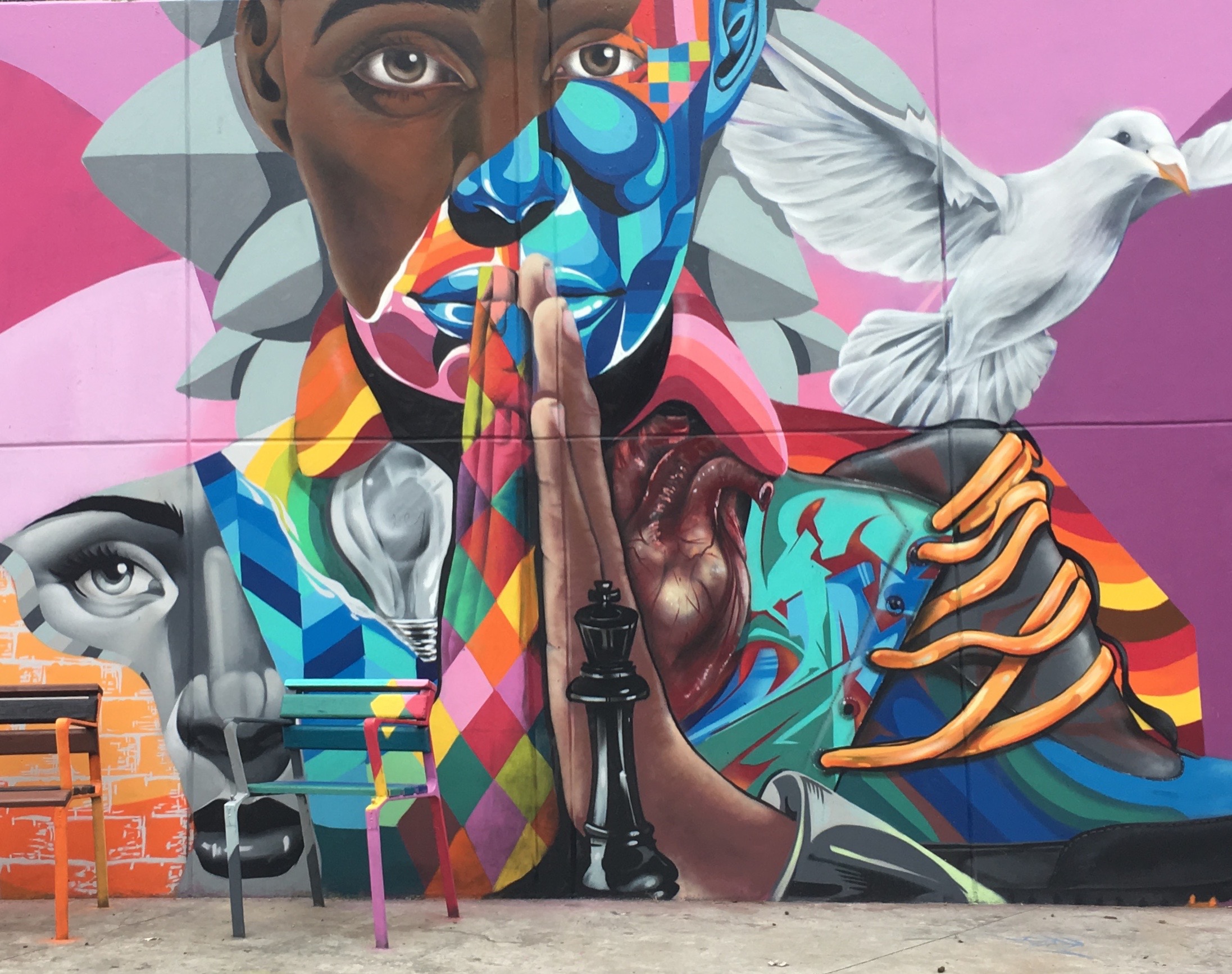 Esperanza…
Esperanza…

 Chota is hot, hot, hot. One of the most recognized street artists.
Chota is hot, hot, hot. One of the most recognized street artists.

 Chota strikes again
Chota strikes again
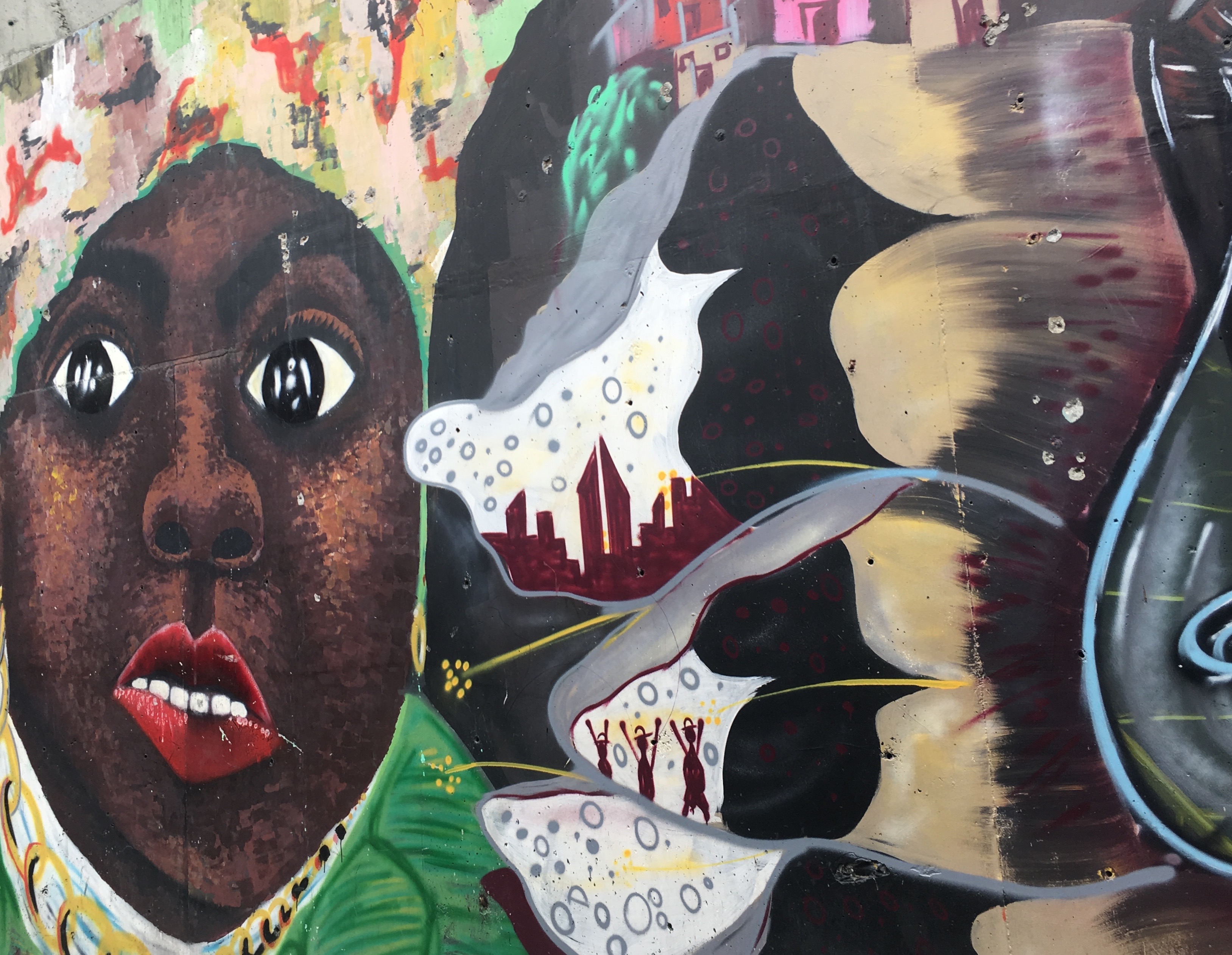
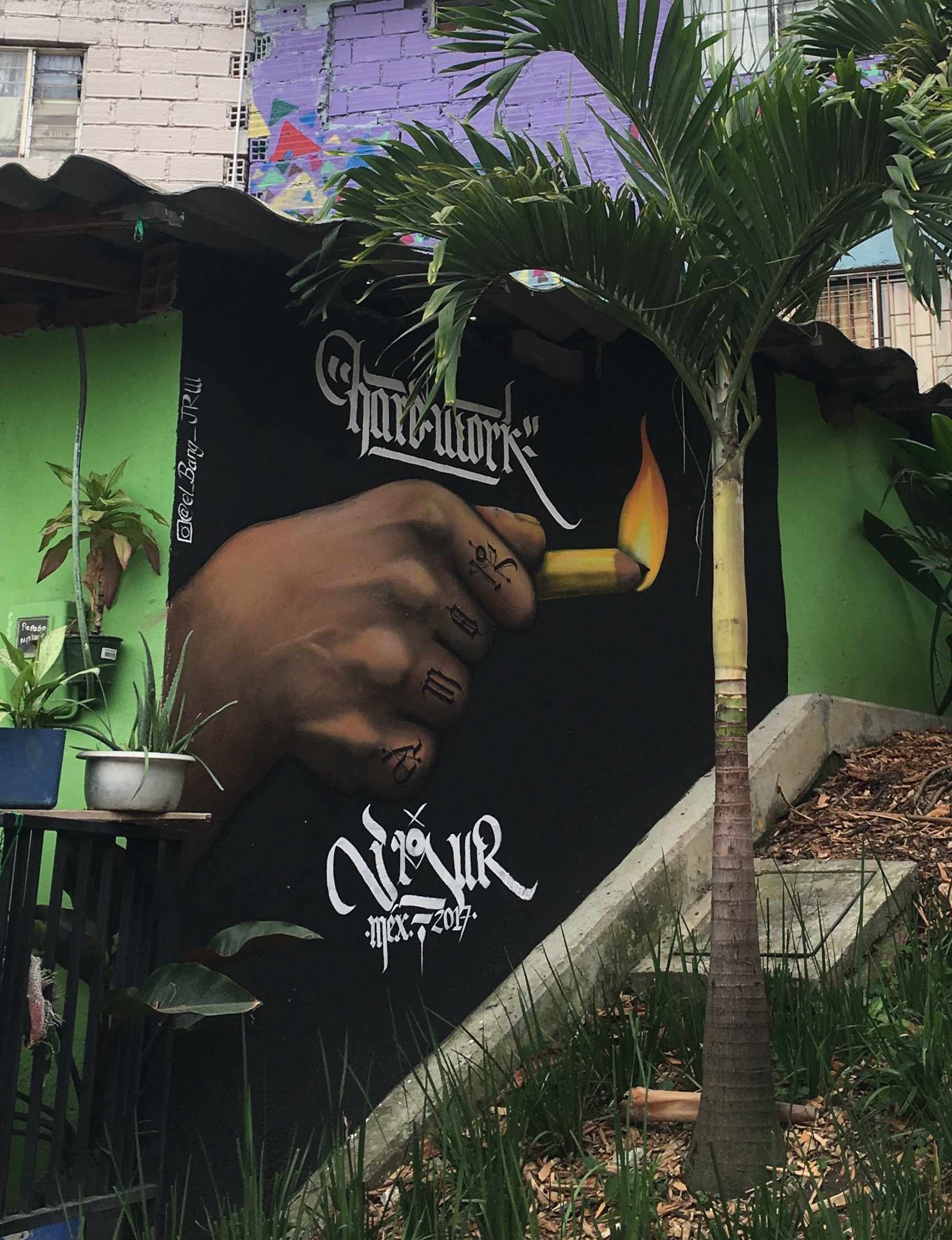 The pen can set the world on fire.
The pen can set the world on fire.


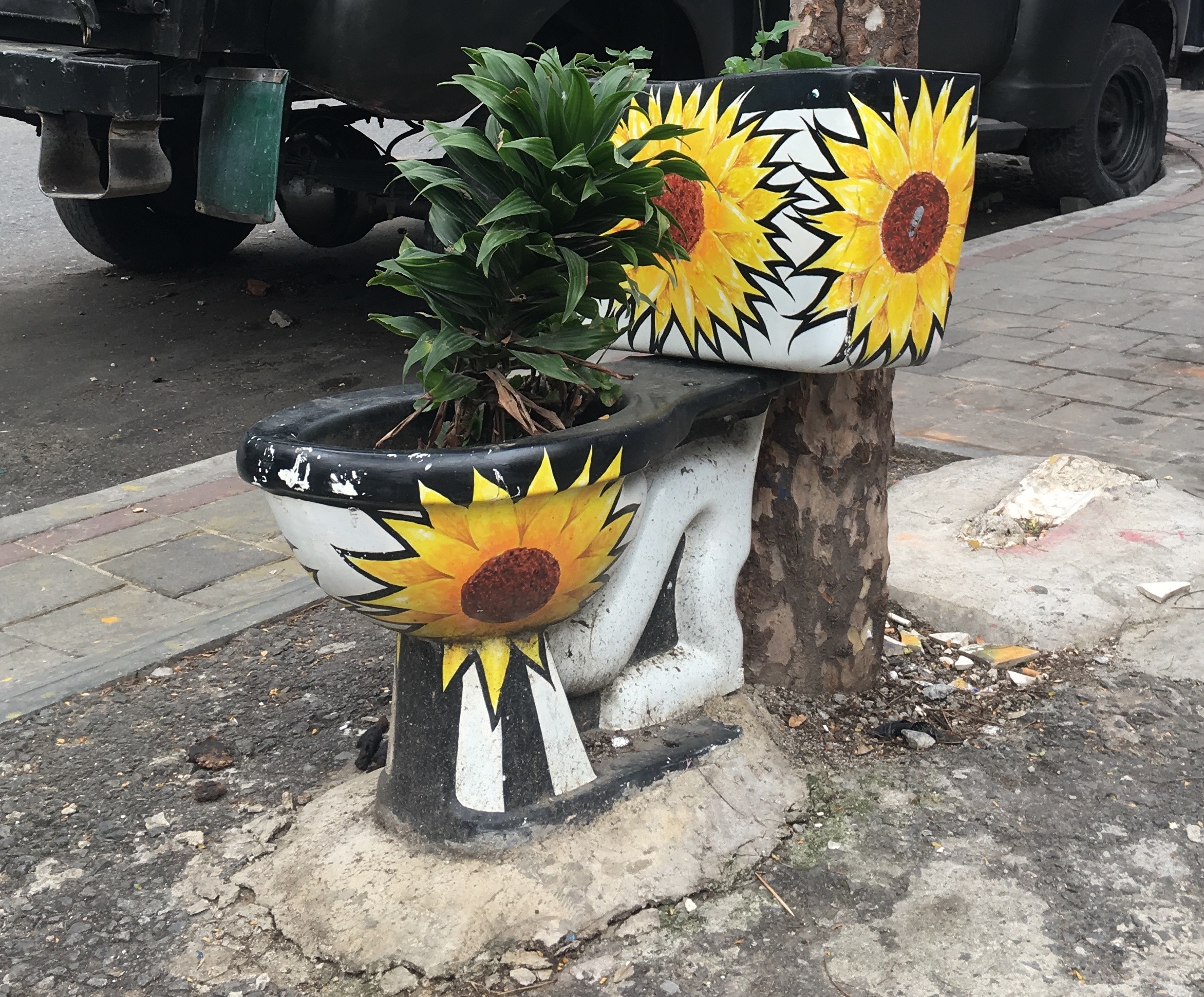 Not everything is political. Whimsy has its place.
Not everything is political. Whimsy has its place.
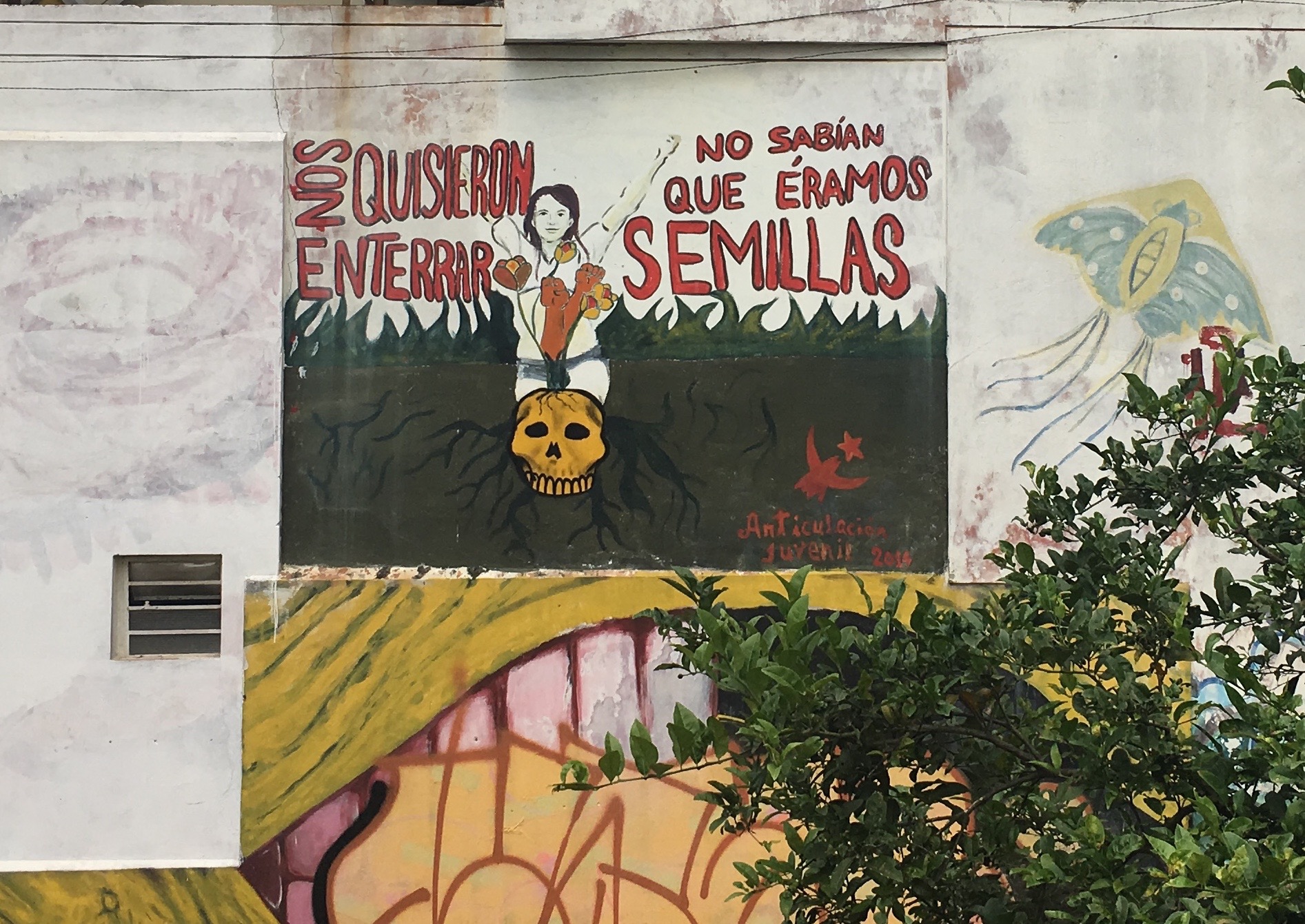 They wanted to bury us. But they didn’t know that we were seeds.
They wanted to bury us. But they didn’t know that we were seeds.
What accounts for the turnaround? Civic pride. Civic services. Taking back neighborhoods. Access to jobs. Libraries. Schools. Impressive. And a long way to go.